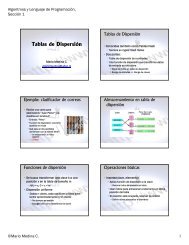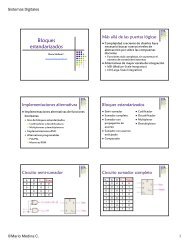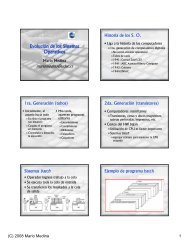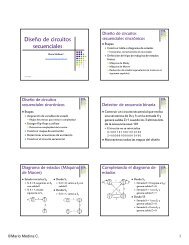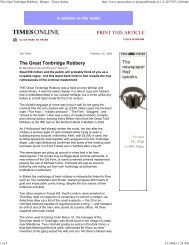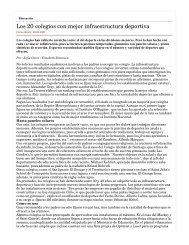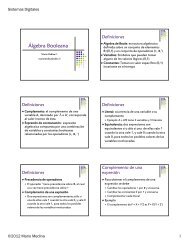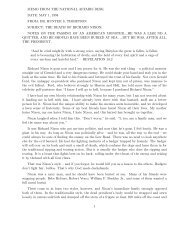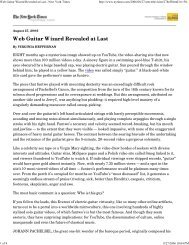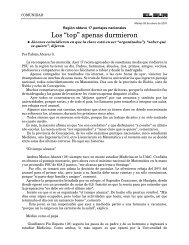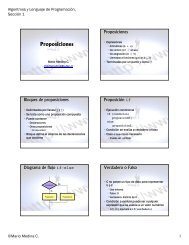A Symbolic Analysis of Relay and Switching Circuits
A Symbolic Analysis of Relay and Switching Circuits
A Symbolic Analysis of Relay and Switching Circuits
You also want an ePaper? Increase the reach of your titles
YUMPU automatically turns print PDFs into web optimized ePapers that Google loves.
13<br />
By 129, f<br />
1s equal to the sum <strong>of</strong> t'he produ cts formed<br />
by permuting primes on the terms <strong>of</strong> X X 1 2<br />
••••Xn in all<br />
Possi ble ways <strong>and</strong> giVing each product a coefficient<br />
equal to the value <strong>of</strong> the fU.nction when that product<br />
is 1. Similarly for 12b.<br />
As an application <strong>of</strong> the series expansion it<br />
should be noted that if we wish to find a<br />
circuit<br />
representing any gi van function we<br />
can always exp<strong>and</strong><br />
the function by atther lOa or lOb in such a way that<br />
any given variable appears at most twice, once as a<br />
make contact <strong>and</strong> once 8S 8 break contact. This is<br />
shown in Fi fl;. 4:.<br />
x,<br />
={<br />
x' 1<br />
Fig. ~<br />
Similarly by 11 any other variable need apJEsr no more<br />
than ~<br />
times (two make <strong>and</strong> two break contacts) etc.<br />
,<br />
A generalization <strong>of</strong> De Morgans theorem is<br />
represented symbolically in the following equation:<br />
13. [r(Xl,x21 •••~I + ,.)]1. = f(Xi'X~ ••••Xri'·,+)<br />
By this we mean that the negative <strong>of</strong> any function may



